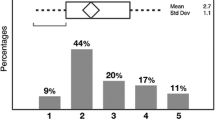Abstract
In order to investigate the association between blood lead level (Pb-B) and neurobehavioral performance of school-age children in Korea, a total of 153 students in 6th-grade were assessed using the Korean version of Swedish Performance Evaluation System: Simple Reaction Time (SRT), Choice Reaction Time (CRT), Color Word Vigilance (CWV), Digit Classification (DC), Digit Additions (DA), Symbol Digit (SD), and Finger Tapping Speed (FTS). Pb-B was measured by means of atomic absorption spectroscopy equipped with graphite furnace atomizer. Geometric means of Pb-B were 2.54 μg/dL in 6th-grade students. Pb-B of 10 μg/dL or greater was not found. Pb-B showed differences by areas and neurological performance showed a significant difference in SRT by areas (p < 0.000). A boy group showed a significant difference in CRT and SD and a girl group showed a significant difference in SRT and DA and marginally FTS. When the subjects were divided into an upper and a lower Pb-B group by median, the difference of neurobehavioral performance between the two groups was significant in SD in a girl group. This study may indicate that Pb-B of 10 μg/dL can have a significant impact on neurobehavioral performance in school-age children.
Similar content being viewed by others
References
European Environment Agency and the WHO Regional Office for Europe, Children’s health and environment: A review of evidence. Chapter 4. Neurodevelopmental disorders, http://www.euro.who.int/_data/assets/pdf_file/0007/98251/E75518.pdf (2002).
Dabrowska-Bouta, B., Struzynska, L., Walski, M. & Rafalowska, U. Myelin glycoproteins targeted by lead in the rodent model of prolonged exposure. Food Chem. Toxicol. 46, 961–966 (2008).
Lanphear, B. P., Dietrich, K., Auinger, P. & Cox, C. Cognitive deficits associated with blood lead concentrations below 10 micrograms/dL in U.S. children and adolescents. Public Health Rep. 115, 521–529 (2000).
Canfield, R. L. et al. Intellectual impairment in children with blood lead concentrations below 10 micrograms/dL. N. Eng. J. Med. 348, 1517–1526 (2003).
Belilinger, D. C., Stiles, K. M. & Needleman, H. L. Low-level lead exposure, intelliengence and academic achievement: a long-term follow up study. Pediatrics 90, 855–861 (1992).
CDC, Preventing lead poisong in young children:a statement by the Centers for Disease Control. Atlanta, GA: Centers for Disease Control, http://wonder.cdc.gov/wonder/prevguid/p0000029/p0000029.asp (1991).
ATSTDR, Toxicological Profile for lead. Publication No. PB93182475, Atlanta, GA: Agency for Toxic Substances and Disease Registry (1993).
Sakong, J., Kwon, H. J., Hong, Y. C., Lee, C. G. & Kang, D. M. Longitudinal study on blood lead concentration and children’s neurobehavioral performance. Epidemiology 22, 278–279 (2011).
Min, J. Y. et al. Neurobehavioral function in children with low blood lead concentrations. Neurotoxicology 28, 421–425 (2007).
Park, K. S., Park, J. Y. & Sakong, J. Relationship between blood lead concentration and neurobehavioral function of children. Korean J. Occup. Environ. Med. 21, 131–142 (2009).
Kim, Y. C. et al. Association between blood lead concentration and computerized neurobehavioral performance in Korean elementary school students. Korean J. Occup. Environ. Med. 23, 183–191 (2011).
Zheng, W. Toxicology of choroids plexus: special reference to metal-induced neurotoxicities. Microsc. Res. Tech. 52, 89–103 (2001).
Long, J., Covington, C., Delaney-Black, V. & Nordstrom, B. Allelic variation and environmental lead exposure in urban children. AACN Clin Issues 13, 550–556 (2002).
Mink, P. J. et al. Evaluation of uncontrolled confounding in studies of environmental exposures and neurobehavioral testing in children. Epidemiology 26, 385–393 (2004).
Kim, D. S., Yu, S. D. & Lee, E. H. Effects of blood lead concentration on intelligence and personality in school children. Mol. Cell. Toxicol. 6, 19–23 (2010).
Mendelsohn, A. L. et al. Low level lead exposure on behaviour problems in preschool children. Am. J. Public. Health 88, 481–486 (1998).
Author information
Authors and Affiliations
Corresponding author
Rights and permissions
About this article
Cite this article
Kim, DS., Ahn, S., Yu, S. et al. The association between lead concentration in the blood and neurobehavioral performance of children. Toxicol. Environ. Health Sci. 4, 87–91 (2012). https://doi.org/10.1007/s13530-012-0121-x
Received:
Accepted:
Published:
Issue Date:
DOI: https://doi.org/10.1007/s13530-012-0121-x




